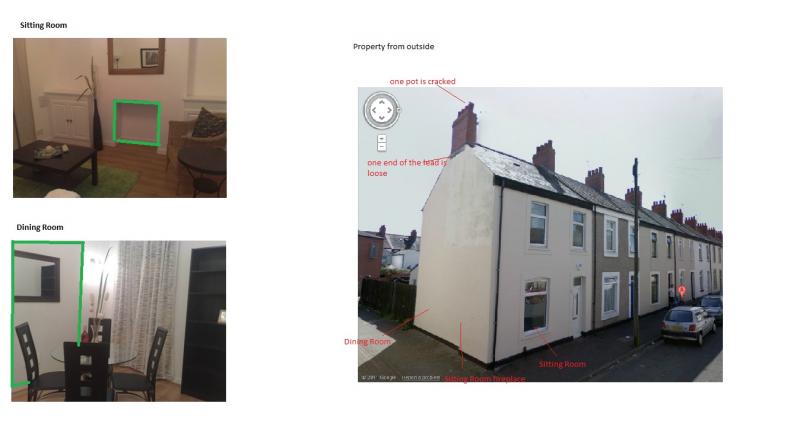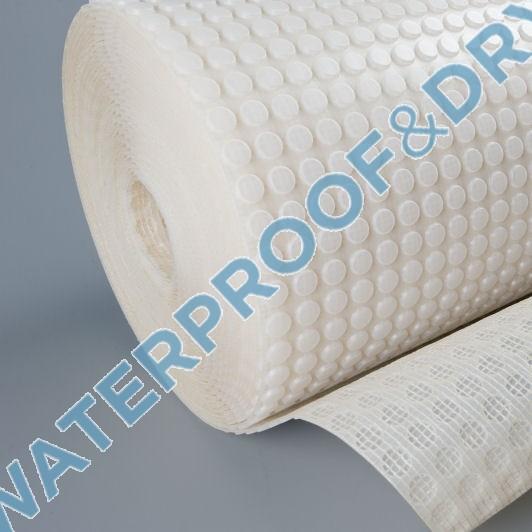Hi,
I have a stubborn damp chimney breast issue in my home in Cardiff. We’ve replastered the affected areas a couple of times in the last 5 years and injected DPC but it doesn’t seem to solve the problem. I don’t what to do to get rid of it. Would really appreciate any expertise advise! I have attached a few pictures of the house to show where the chimney breast walls are – one in the sitting room and one in dining room.
The house is an end terrace house built in around 1910. It had DPC done around most of the walls (apart from the chimney breast walls which vents were added instead) on the ground floor in 2007.
After the work is done, most of the dampness was solved and we were pleased. However, the two chimney breast walls have been showing signs of damp patch and salt contamination. We called in the company in 2010. They admit the dampness and agreed to replaster one of the chimney breast wall around the sealed fireplace, again, no DPC was injected.
Right after the work is done, the newly plastered area starts to show salt contamination and never got dry. I had a different DPC company to check the property today and was told that the dampness could come from the chimney stack. This is because they found one of the chimney pot is cracked and another pot cover (is that the right word?) is missing. In addition, one end of the lead flashing has also become loose. They’ve advised me to fix the chimney pots and lead work, but also said that I need to replaster both chimney breast walls on the ground floor and inject DPC. I’m fine with the chimney work but really don’t want to go through the stress of replaster the walls again.
Is there any easier way to stop the dampness coming from the ground, i.e. if we just inject the DPC but not to replaster the walls, would that fix the dampness? Note that I don’t mind the salt contamination on the wall. We’ve put wall paper to cover it so as long as the wall is dry then that’ll do for me.
The other question is that I don’t really understand why the first company didn’t put any DPC in the chimney breast walls in the first place. Is it a common practice to use vent rather than DPC on these walls?
In addition, I also want to explore the option of completely seal the chimney, i.e. cap it from the top and somehow seal from the bottom as well, e.g. DPC in the base or any other ways which could seal it completely? Is this idea a totally no go or could it solve the problem?
Thanks!
Heather
I have a stubborn damp chimney breast issue in my home in Cardiff. We’ve replastered the affected areas a couple of times in the last 5 years and injected DPC but it doesn’t seem to solve the problem. I don’t what to do to get rid of it. Would really appreciate any expertise advise! I have attached a few pictures of the house to show where the chimney breast walls are – one in the sitting room and one in dining room.
The house is an end terrace house built in around 1910. It had DPC done around most of the walls (apart from the chimney breast walls which vents were added instead) on the ground floor in 2007.
After the work is done, most of the dampness was solved and we were pleased. However, the two chimney breast walls have been showing signs of damp patch and salt contamination. We called in the company in 2010. They admit the dampness and agreed to replaster one of the chimney breast wall around the sealed fireplace, again, no DPC was injected.
Right after the work is done, the newly plastered area starts to show salt contamination and never got dry. I had a different DPC company to check the property today and was told that the dampness could come from the chimney stack. This is because they found one of the chimney pot is cracked and another pot cover (is that the right word?) is missing. In addition, one end of the lead flashing has also become loose. They’ve advised me to fix the chimney pots and lead work, but also said that I need to replaster both chimney breast walls on the ground floor and inject DPC. I’m fine with the chimney work but really don’t want to go through the stress of replaster the walls again.
Is there any easier way to stop the dampness coming from the ground, i.e. if we just inject the DPC but not to replaster the walls, would that fix the dampness? Note that I don’t mind the salt contamination on the wall. We’ve put wall paper to cover it so as long as the wall is dry then that’ll do for me.
The other question is that I don’t really understand why the first company didn’t put any DPC in the chimney breast walls in the first place. Is it a common practice to use vent rather than DPC on these walls?
In addition, I also want to explore the option of completely seal the chimney, i.e. cap it from the top and somehow seal from the bottom as well, e.g. DPC in the base or any other ways which could seal it completely? Is this idea a totally no go or could it solve the problem?
Thanks!
Heather





